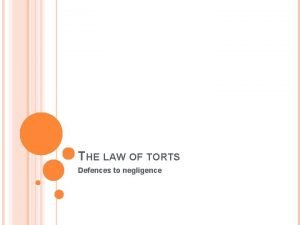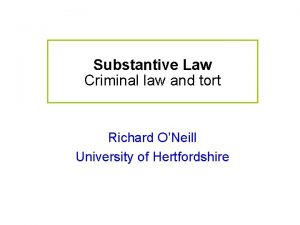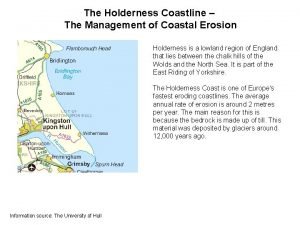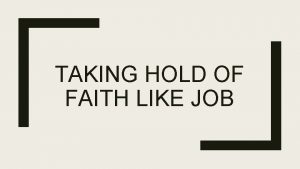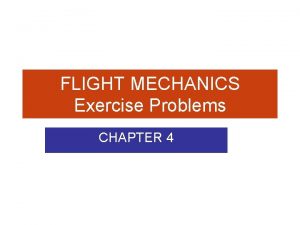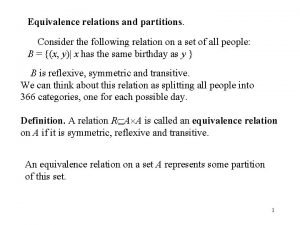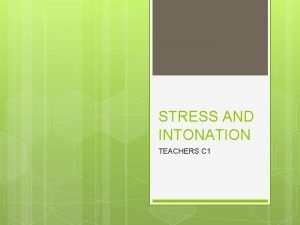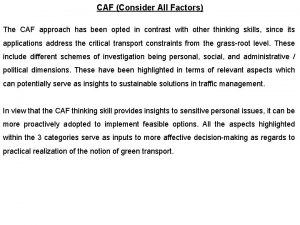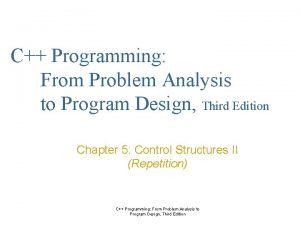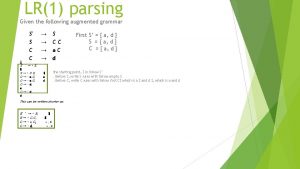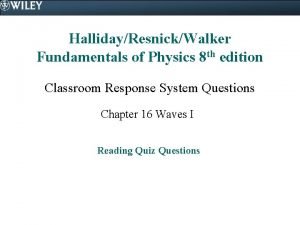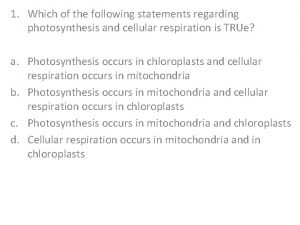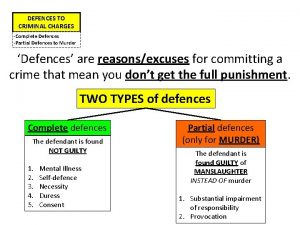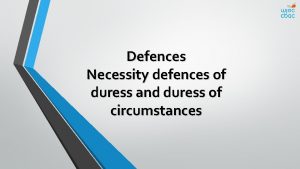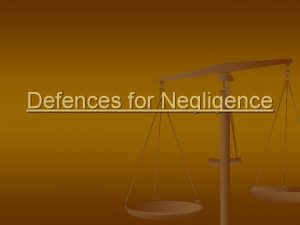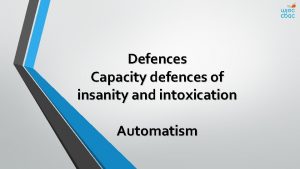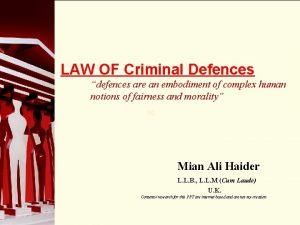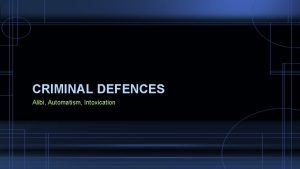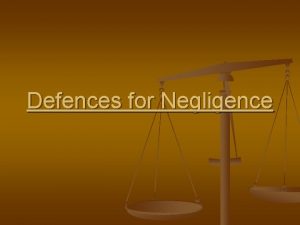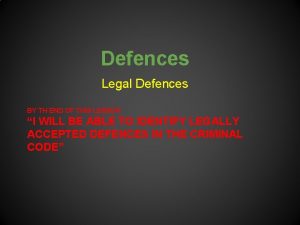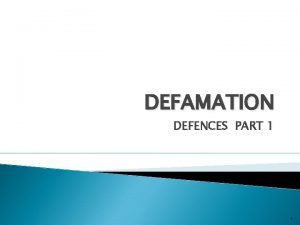Defences 3 In this lecture we will consider





















- Slides: 21

Defences 3 • • • In this lecture, we will consider: The nature of automatism The scope and operation of automatism Self-induced sane automatism The distinction between automatism and insanity • The requirements for a defence of insanity

Automatism • Frequently the actus reus of a crime involves conduct on the part of D and it is generally accepted that this conduct must be willed, or voluntary, before it can form the basis of criminal liability. Accordingly, where such conduct is involuntary then D may escape liability.

Scope and Operation of Automatism • Automatism arises where D's mind is unable to control his bodily actions. • Traditionally it has been seen as a denial of the actus reus element of a crime but sometimes as a denial of mens rea. • Could it be regarded as both?

What states/conditions will suffice for automatism? • In Bratty v Att Gen for N Ireland (1963), Lord Denning stated that automatism means: • “. . . an act which is done by the muscles without any control by the mind, such as a spasm, a reflex action or convulsion; or an act done by a person who is not conscious of what he is doing, such as an act done whilst suffering from concussion or whilst sleepwalking. ”

To what extent must there be a complete inability to control actions rather than mere difficulty in controlling actions? • See Broome v Perkins (1987)

• Sane automatism (automatism) and insane automatism (insanity)

Self Induced Sane Automatism • Where intoxication by alcohol or dangerous drugs causes the automatism, the intoxication rules in Majewski apply.

• In any other case the correct approach is that laid down in Bailey (1983). • Thus, where D’s automatism is self induced and he is charged with a specific intent offence, he must be acquitted if he did not form the mens rea for the offence.

• Where, however, D is charged with a basic intent offence, he will not be convicted if he lacked the mens rea, unless he was subjectively reckless as to becoming aggressive or engaging in unpredictable and uncontrolled conduct.

• The importance of the distinction between automatism and insanity

Insanity • Burden of proof for insanity is on D • Requirements fore the defenceof insanity: • D must prove he laboured under a defect of reason from a disease of the mind so that either he did not know the nature and quality of his act or alternatively so that he did not know that what he was doing was wrong.

Disease of the mind • In Quick (1973), the court stated that would not suffice was a malfunctioning of the mind of transitory effect caused by the application to the body of some external factor e. g. violence, drugs, including anaesthetics, alcohol and hypnotic influences. Thus, the courts draw a distinction between external factors giving rise to sane automatism and factors which are internal or inherent in the form of disease which give rise to a finding of insanity.

The problems caused by the intrisic/extrinsic test • The diabetic • A D who took too much insulin and, therefore, suffered from hypoglycaemia is treated by the courts as a sane automaton but a D who took insufficient insulin and, as a result, becomes hyperglycaemic is treated as having been insane, see Hennessey (1989).

• The epileptic • Sullivan (1984) - an epileptic who committed a s. 20 assault whilst suffering an epileptic fit would be treated as an insane automaton, epilepsy being an internal factor.

• The sleepwalker • Burgess (1991)- sleepwalking is an internal factor constituting a disease of the mind.

Transitory Effect • Example • D is hit on the head, becomes concussed and commits a crime whilst concussed. This would be sane automatism. • c. f. if the blow to the head causes permanent brain damage so that D might have further attacks without any further blows to the head, what began as an external factor would have become an internal bodily disorder, a disease of the mind = insanity.

Who decides whether a particular condition amounts to a disease of the mind? • See Kemp |(1957) - it is a question of law for the trial judge.

“Defect of reason” • The disease of the mind must have prevented the defendant, or made him incapable of, exercising the powers of ordinary reasoning.

“Not knowing the nature and quality of his act” • D must not have known what he was physically doing and what the physical consequences of his actions would be. This will usually be very difficult to establish.

“Not knowing his act was wrong” • D can try to rely on the alternative requirement for the insanity defence i. e that he did not know that his act was wrong. • D must have failed to realise that his actions were unlawful (Windle (1952)).

• Criticisms of the M’Naghten Rules
 Dawlish warren sea defences
Dawlish warren sea defences Defences to negligence
Defences to negligence What are capacity defences
What are capacity defences Bipolar analysis of coastal defences
Bipolar analysis of coastal defences General defences in tort
General defences in tort Holderness coastline
Holderness coastline 01:640:244 lecture notes - lecture 15: plat, idah, farad
01:640:244 lecture notes - lecture 15: plat, idah, farad Oointerest
Oointerest Satan loves to take what's beautiful
Satan loves to take what's beautiful Consider a case of a two-component standby system
Consider a case of a two-component standby system Speed tunnel
Speed tunnel Consider the following relation
Consider the following relation I said she might consider a new haircut
I said she might consider a new haircut Situational ellipsis
Situational ellipsis O captain my captain is an elegy
O captain my captain is an elegy Advantages of labour saving devices
Advantages of labour saving devices Consider all factors
Consider all factors Consider the following c program
Consider the following c program Consider the augmented grammar given below
Consider the augmented grammar given below Consider the three equations below.
Consider the three equations below. Factors to consider in evaluating retail trading area
Factors to consider in evaluating retail trading area Consider the following statements regarding photosynthesis
Consider the following statements regarding photosynthesis

